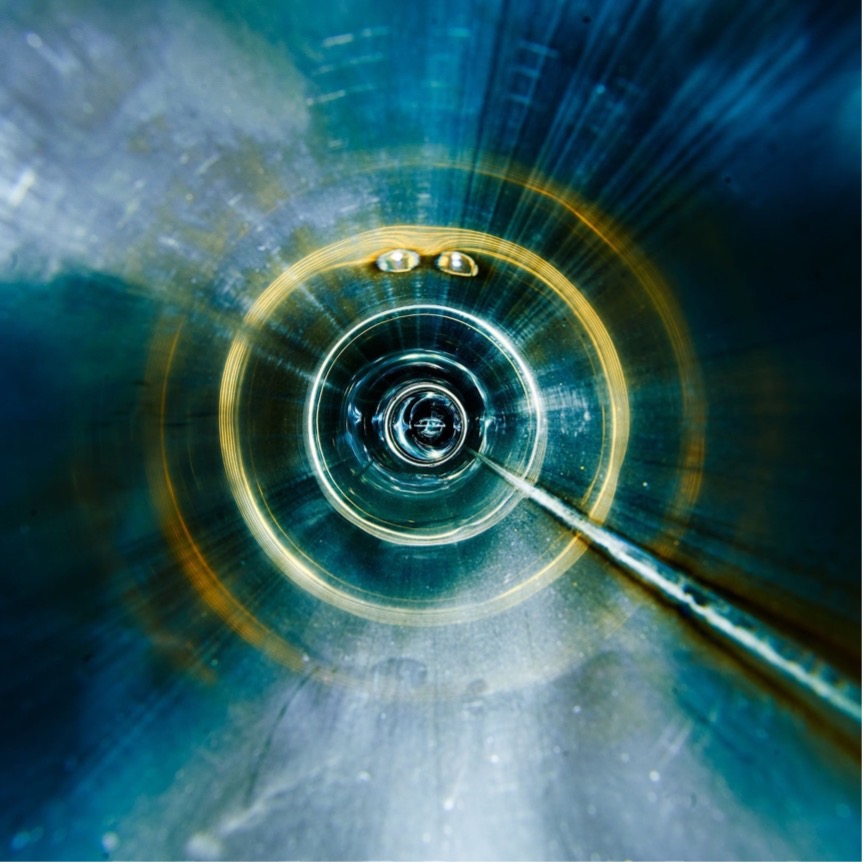
NA61/SHINE's lead-scintillator calorimeter. (Image: CERN)
In late 2023, Wojciech Brylinski was analysing data from the NA61/SHINE collaboration at CERN for his thesis when he noticed an unexpected anomaly - a strikingly large imbalance between charged and neutral kaons in argon-scandium collisions. He found that, instead of being produced in roughly equal numbers, charged kaons were produced 18.4% more often than neutral kaons. This suggested that the so-called "isospin symmetry" between up and down quarks might be broken by more than expected due to the differences in their electric charges and masses - a discrepancy that existing theoretical models would struggle to explain. Known sources of isospin asymmetry only predict deviations of a few percent.
"When Wojciech got started, we thought it would be a trivial verification of the symmetry," says Marek Gaździcki, who was spokesperson of NA61/SHINE at the time of the discovery. "We expected the symmetry to be closely obeyed - although we had previously measured these types of discrepancies at the NA49 experiment, they had large uncertainties and were not significant."
Isospin symmetry is one facet of flavour symmetry, whereby the strong interaction treats all quark flavours identically. This means that all types of quarks should behave the same under the strong interaction, except for kinematic differences arising from their different masses. Isospin is not a symmetry of the electromagnetic interaction as up and down quarks have different electric charges. According to isospin symmetry, strong interactions in heavy-ion collisions should generate nearly equal amounts of charged kaons (comprising either an up quark and a strange antiquark or an up antiquark and a strange quark) and neutral kaons (comprising either a down quark and a strange antiquark or a down antiquark and a strange quark), given the similar masses of the up and down quarks. NA61/SHINE's data contradicts the hypothesis of equal yields with a 4.7σ significance.
"I see two ways to interpret the results," says Francesco Giacosa, a theoretical physicist working with NA61/SHINE. "First, we might be substantially underestimating the role of electromagnetic interactions in creating quark-antiquark pairs. Second, these results could mean that strong interactions do not obey flavour symmetry. If this is true, it would contradict physicists' current understanding of quantum chromodynamics (QCD), that is, how quarks and gluons (carriers of the strong interaction) combine."
While the experiment routinely measures particle yields in nuclear collisions, finding a discrepancy in isospin symmetry was not something the researchers were actively looking for. NA61/SHINE's primary focus is studying properties of the production of hadrons in the production of hadrons when beams from CERN's Super Proton Synchrotron collide with a variety of fixed nuclear targets. This data is also shared with neutrino and cosmic ray experiments, such as T2K, to help them to refine their models.
The collaboration is now planning additional studies on this new result, using different projectiles, targets and collision energies to determine whether this effect is unique to certain heavy-ion collisions or is a more general feature of high-energy interactions. It has also put out a call to theoretical physicists to help explain what might have caused such an unexpectedly large asymmetry.
"We tried to fit the data into the current, existing models, but it didn't work at all - it was just not possible," says Giacosa. "We need more experimental data and more theoretical predictions to fill our gap in knowledge of the strong interaction. So the real question is: what's next?"






